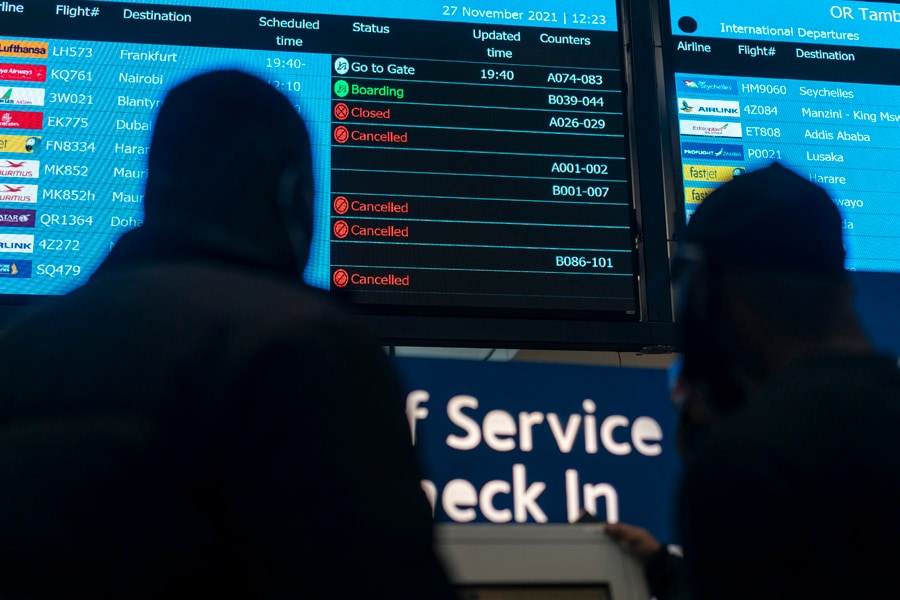
How two flights to Europe may have spurred spread of new variant
The flights, like the cruise ships of the early pandemic, have prompted fears of superspreader events and raised concerns about lessons unlearned
 Flights to numerous destinations were cancelled at O.R. Tambo International Airport in Johannesburg, Nov. 27, 2021. A confounding array of Covid rules and lax enforcement of mask wearing may have sent infected passengers on two KLM flights from South Africa into ‘who knows where.’ (Joao Silva/The New York Times)
Flights to numerous destinations were cancelled at O.R. Tambo International Airport in Johannesburg, Nov. 27, 2021. A confounding array of Covid rules and lax enforcement of mask wearing may have sent infected passengers on two KLM flights from South Africa into ‘who knows where.’ (Joao Silva/The New York Times)
For the hundreds of passengers traveling from South Africa to Amsterdam on Friday, flight KL592 had all the trappings of international travel in the COVID era.
They came armed with paperwork proving their eligibility to fly, and check-in agents sifted through a bewildering assortment of requirements determined by final destination. Some countries, like the United States, required vaccinated travelers to show negative test results. Others didn’t. On the long flight, only some wore masks, passengers said, as flight attendants often let the slipping masks slide.
But while the flight was en route, and the passengers slept or watched their screens, everything changed on the ground.
Panic about the new omicron variant that had been discovered in southern Africa prompted countries to close their borders. The arrivals descended into a new post-omicron reality, and it was a hellish one, with hours spent breathing stale air as their planes sat on the tarmac, then fighting exhaustion in crammed waiting rooms, awaiting swab results in close quarters with fellow travelers who would turn out to be infected with the new and possibly more dangerous variant.
“We were in the same place, the same room,” said one passenger, Jan Mezek, 39, a laboratory technician whose company services swab-test machines and who was returning from a two-week work trip to his home in Prague. “I felt like a pig in a pen,” he said, adding “they were completely spreading the virus around us.”
©2019 New York Times News Service







